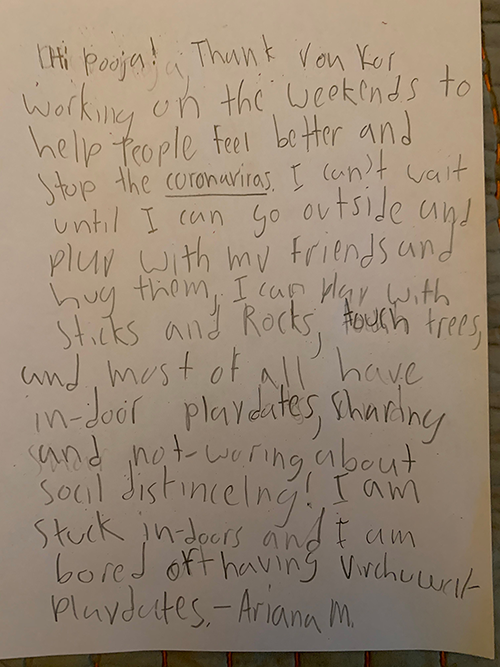- Benchmark Education
- Newmark Learning
- Reycraft Books
- Create an Account
6 Qualities of a Strong Writing Curriculum

by Leah Mermelstein
I can’t believe I am old enough to say this, but I have seen it all when it comes to writing instruction. Early on in my career, I was trained in balanced literacy and used what I learned from my training with my first- and third-grade students. I tried hard in those early days to create a classroom filled with joy, so that all of my students would become lifelong writers. I always let them choose their own personal writing topics. Then I designed lessons by looking at their writing and observing them in the midst of the writing process. I steered away from explicitly teaching the conventions of writing and only taught those conventions when and if they naturally arose.
When I made the transition from classroom teacher to literacy consultant in the early 2000s, things started to shift. We started to teach the conventions of writing more systematically. We still looked at the student writing samples, but now we were starting to create units of study together. We used the standards to guide us in this planning and made a point of planning units for the different writing genres. As time went on, many of the schools I worked with no longer planned their own writing units of study. Rather, they began to purchase writing units or curriculum that teachers could use as resources for their writing instruction.
More recently, new questions have arisen as school districts have taken a careful look at their writing instruction and curriculum. Some of the questions I am hearing these days are:
- How do we help children become more engaged in the writing process?
- Should students always choose their own personal topics or should they be writing what they are learning about in school?
- How do I balance the skills and craft of writing?
- How do we ensure equal access so all children can become independent writers?
Every teaching experience I’ve had over the last 25 years has helped me understand that there is no magic bullet, no perfect writing program or perfect writing unit that will magically answer all of these questions or solve all of our writing woes. There are, however, some key qualities to infuse into any writing curriculum you are using. I would like to share six of these key qualities. My hope is that by sharing these, you can reflect upon your current curriculum and think about what tweaks or revisions you might want to make.
1. Writing Curriculum Should Emphasize Purpose
It can be helpful to look over your current writing curriculum to ensure that the lessons you are doing either give students purpose for their writing or help them discover these purposes on their own. When children understand why they are writing and who they are writing for, they are far more motivated and engaged in the writing process.
Last year when the pandemic struck, my daughter and I were both left feeling anxious and lost. My daughter found her way forward when she decided to write a letter to an ER doctor thanking her for her service. The minute she put pencil to paper, an expression of calm resolve came over her face. Purpose-driven writing creates the conditions for skill and craft to flourish.

The why for writing can be audience-driven as it was in the above example, but sometimes the purpose for writing can be driven by what students are trying to practice; that is, students understand they are writing a particular sentence or in a particular genre to practice and get better at some skill or strategy. No matter what the exact purpose is, it’s essential that students know the why behind the writing they are doing.
2. Writing Curriculum Should Emphasize Writing About High-Quality Topics
When I first started teaching, I assumed that children should always choose their own topics. Because of that, I never got involved with that part of the writing process. I let them write about whatever they wanted even if I had some apprehension about whether they could write well about the topic they had chosen. What I realized over time is that students write best when they are writing about:
- A topic they know well
- A topic they are passionate about
- A topic they are curious and/or are yearning to learn more about
Helping students write about a high-quality topic can/should play out in different ways in the classroom. At times it might mean that a child chooses a personal topic from their own lives. For example, a student might choose to write a persuasive essay trying to convince teachers to give only half an hour of homework per night. A student would choose that topic because he is passionate about that idea. His passion for that topic would help him write well and perhaps would encourage him to do some further research. Other times, writing about a high-quality topic might mean that children are writing about what they are learning in school. For example, a second-grade class might be learning about different buildings in New York City. Once children have become knowledgeable about the buildings, the teacher could ask her students to choose one of these building and write an informational essay teaching others about what they had learned.
Take some time to look at your current writing curriculum. Are children writing about topics they know well? Do they have opportunities to choose their own topics? Are they also asked to write about topics they are learning about in school? Use these questions to reflect and revise your writing curriculum.
3. Writing Curriculum Should Be Joyful
Writing time in classrooms should be joyful because our students deserve nothing less. Recently there was a study that spoke about how a person’s mood can influence how well they comprehend a text—the better their mood was, the better their comprehension (Bohn-Gettler & Rapp, 2011). Although this study was about reading, the same is true for writing (Bohn-Gettler & Rapp, 2014). Ralph Fletcher in his book Joy Write (2017, p. 30) says it best: “Play in writing is not just a nice idea—it’s essential. It’s that playfulness that brings a sense of joy to our teaching and to our students’ learning.” Of course, there are always moments of difficulty in writing. But if the overall feeling in a classroom is that of playfulness and joy, children can more easily navigate the harder parts when they arise.
You might want to take a joy inventory during your writing instruction. Is there a playful spirit to how you teach writing? If not, are there small tweaks you can do to make your writing instruction more joyful?
4. Writing Curriculum Should Include All Aspects of Learning to Write
In my early days of teaching writing, I focused almost exclusively on the craft of writing and left the conventions of writing to chance. A strong writing curriculum gives all students equal access to all parts of writing instruction. I find it helpful to divide the parts of learning to write well into three main categories. Teachers should provide instruction within each of these categories:
- Language conventions (spelling phonics, handwriting, punctuation)
- Language composition (vocabulary, grammar, sentence structure, genre)
- Application (Teachers instruct their class on how to apply both language conventions and language composition while going through the writing process.)
I would suggest taking some time to look at the writing lessons provided in your curriculum. Are all three of these categories given equal access? If not, how can you fill those in those gaps?
5. Writing Curriculum Should Be Flexible
Although there are skills we will teach our entire class, every child’s path to learning that skill will be different. Some will need lots of practice. They will need your support as you share the work with them. Others will not only need you to share the work with them, but they will also need you to guide them as they try it on their own. Still others will need further support as they try to apply that skill/strategy to a new topic. The tricky part is that other students will need very little practice. You give them a little bit of “we do” instruction and they are ready to roll. No matter what curriculum you are using, you want to have the flexibility to tailor your instruction so that each student gets the type of practice they need.
Are there opportunities for you in your curriculum to give students the type of “we do” practice they need? If not, what types of revisions can you make so that you can be more flexible?
6. The End Goal Should Be Independence
One important aspect of quality instruction is that students get supported practice as I described above. But it’s imperative not to forget that you are giving them this supported practice so that they can eventually do the same work on their own. There are many ways to emphasize independence from classroom routines to meaningful practice to deliberate language, but probably the most important thing is to give students time to write independently every week. In that way, you can use your formative assessments to see if and when they reach independence with the skills and strategies you are teaching.
Does your writing curriculum make time for independent writing? If it doesn’t, you might want to carve out some time each week for your students to write independently.
Writing instruction has the potential to engage, excite, and propel students forward. A strong writing curriculum is a key aspect in doing this. I hope these six qualities help you make your writing curriculum the very best it can be.
Works Referenced
Bohn-Gettler, C. M., & Rapp, D. N. (2011). Depending on my mood: Mood-driven influences on text comprehension. Journal of Educational Psychology, 103(3), 562–577.
Bohn-Gettler, C. M., & Rapp, D. N. (2014). Emotion during reading and writing. In R. Pekrun & L. Linnenbrink-Garcia (Eds.), Educational psychology handbook series. International handbook of emotions in education (pp. 437–457). Routledge/Taylor & Francis Group.
Fletcher, R. (2017). Joy write: Cultivating high-impact, low-stakes writing. Heinemann.
About the Author
 |
Leah Mermelstein is a well-known expert and author on the teaching of writing, reading, and language development, and author of the upcoming PD Essentials book "We-Do" Writing: Maximizing Practice to Develop Independent Writers. She is a sought-after keynote speaker at national conferences, admired for her close study of students’ writing and reading development. As a literacy consultant, she works closely with school districts, teachers, and students, helping develop and deliver quality and cohesive literacy instruction. She holds a Master’s Degree in Cultural Diversity and Curriculum Reform, and aspires to ground all of her work in creating equitable access to children and families. |

















Comments